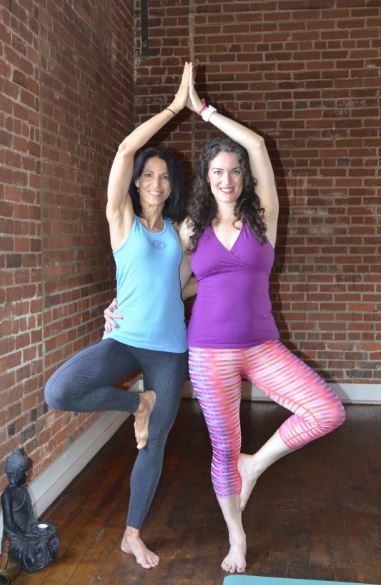 Sage Rountree is a pioneer in yoga for athletes, an endurance sports coach, and author of six books, including The Athlete’s Guide to Yoga, Racing Wisely, and Everyday Yoga. Co-owner of the three-studio Carolina Yoga Company and director of its teacher trainings, Sage also teaches nationwide and online at YogaVibes and sageyogateachertraining.com.
Sage Rountree is a pioneer in yoga for athletes, an endurance sports coach, and author of six books, including The Athlete’s Guide to Yoga, Racing Wisely, and Everyday Yoga. Co-owner of the three-studio Carolina Yoga Company and director of its teacher trainings, Sage also teaches nationwide and online at YogaVibes and sageyogateachertraining.com.
Angela Ambrose: Why is it so important for serious athletes to do yoga? Can it help reduce injuries?
Sage Rountree: Yoga is going to give you strength, flexibility and focus, and together, when you have adequate amounts of both strength and flexibility, then you have balance, and balance is really critical for injury prevention. Most athletes have some pretty specific sports imbalances that come straight out of their training. Yoga can break them out of whatever those imbalances are and take them into other planes of movement. It creates balance of the body in space, it creates balance within the body, and most importantly, it creates balance between work and rest.
 AA: I loved taking your “Yoga for Athletes” class, but I have to admit that I was surprised when you announced at the beginning of class that it would not be a sweaty, super-athletic class. Why shouldn’t athletes come to yoga for a workout?
AA: I loved taking your “Yoga for Athletes” class, but I have to admit that I was surprised when you announced at the beginning of class that it would not be a sweaty, super-athletic class. Why shouldn’t athletes come to yoga for a workout?
SR: For people who are not in concerted training, they can certainly get a workout through an asana practice. But for folks who are training specifically for a particular sport and not just for general fitness, they should be getting their workouts in their workouts, and yoga should actually be far more mellow than they usually expect. If you’re deep in competition, racing every weekend or you’re playing games every third night, you necessarily are going to have to go a lot lighter on the yoga, and then you have to ramp up the more restorative stuff – putting your legs up the wall, doing actual restorative poses, doing more mellow stuff, breath work, visualization, because that will help you refill the well so that you will have more to give in the next game.
AA: It sounds like your yoga practice should complement your vigorous sports training and create a yin-yang balance.
SR: That’s a good way to think about it because you’ve got to have an inverse proportion between the intensity of athletic training and the intensity of the yoga practice. If you take somebody in the off-season, especially someone who has experience with yoga, they could probably do just fine with a pretty vigorous asana practice. But the closer they get to competition, the more mellow their practice needs to be and the more focused on helping with athletic recovery with adaptation to the stresses of training, instead of just piling more stress on.
AA: Yoga emphasize keeping your attention on the breath. How does that help athletes perform better on the field, court or in the pool?
SR: It develops your ability to pay attention to how your breath is in service to what your body is doing moment to moment. For example, if you’re a tennis player, when you throw the ball up to serve, are you breathing in or out? When you actually hit the ball, are you breathing in or out? The asana practice can help athletes realize where the breath can be of best support, what a relaxed breath might serve to do in terms of calming you down pre-competition, and what a focused breath can serve to do in terms of supporting your spine.
AA: Aside from the physical strengthening and stretching, what else can athletes gain from yoga?
SR: Yoga can help build your focus. For some athletes that’s the most important part of being able to compete – being able to focus on the black line at the bottom of the pool or being able to focus on the road, or being able to focus on the ball because you have this one precise thing you have to do with the ball. But once you’ve got focus, then yoga can also teach you presence. And presence is the ability to be with it moment to moment. Not just aware of the ball or black line at the bottom of the pool, but also where the competition is around you, whether now is the right time to try to push a little harder and break away from them, whether now is the time to pass the ball to your teammates. You can learn those lessons right there from an asana practice.
AA: What advice do you have for competitive athletes who are looking to add yoga to their training?
SR: Tell people to go to restorative yoga. Tell everybody to calm down. They will be much faster and stronger if they don’t beat themselves up. There’s only so much stress that your body is able to adapt to, and if you keep piling it on beyond that, something’s going to give.